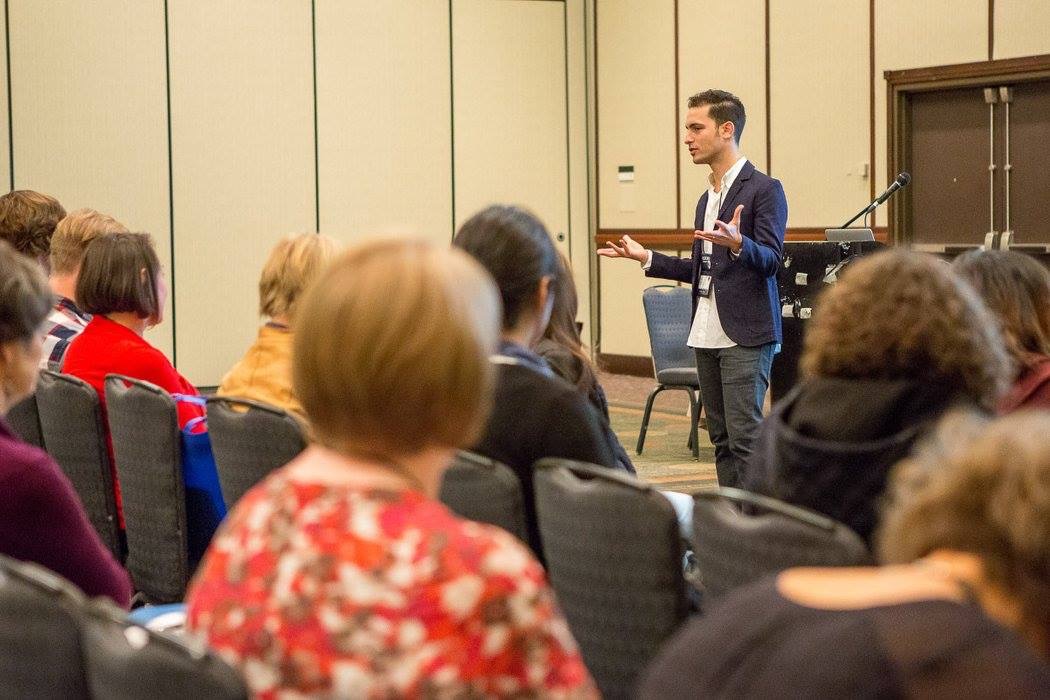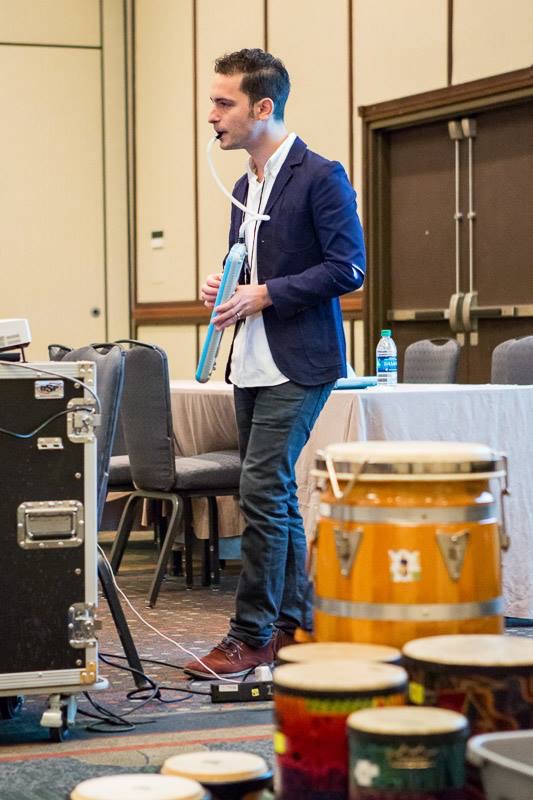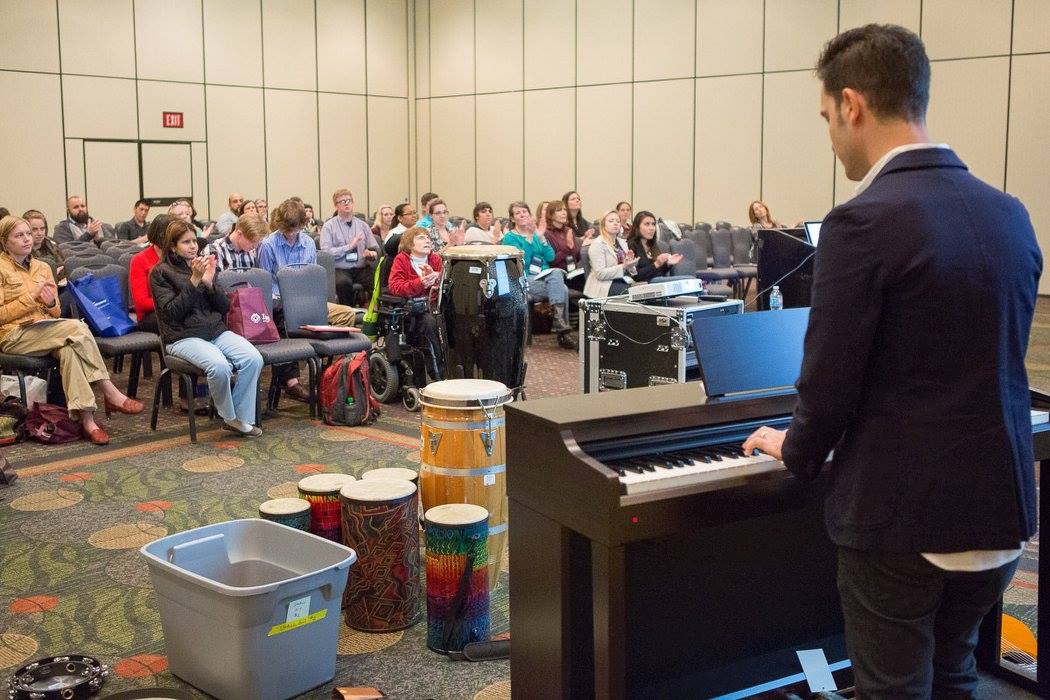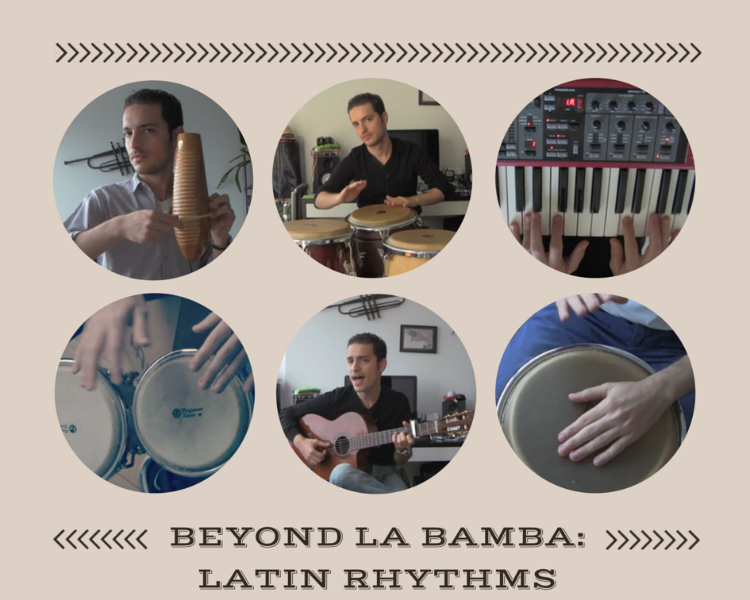
Latin Rhythms at AMTA 2015

Every year, the American Music Therapy Association holds a national conference where the music therapy community meets to discuss the latest advancements in our field and make important decisions that pave the way for the present and future of the profession. I love attending these conferences because it helps me remain acquainted with the latest research. It also gives me an opportunity to learn from others, share my experience, and grow as a clinician through the many enlightening discussions and conversations I get to have with my brilliant friends and colleagues.
This year the conference was held in Kansas City, and I had the honor of presenting about Latin rhythms and how they can be used clinically.
[/x_text]I was glad to have a fantastic turn-out of about 70 music therapists from around the country. We discussed the importance of taking culture-specific considerations when working with our clients, and focused on the incredibly diverse and influential Latin community. We briefly touched on major musical styles from Latin America, yet spent most of our time looking closely at rhythms based on clave such as Son Montuno, Cha-cha-cha, and Bolero. Participants got a chance to understand, play, and experience the different components of these fun intricate rhythms. We proceeded to discuss how we can use these material with Latin and non-Latin clients in different music therapy settings. We all had an absolute blast and came out dancing with our enriched musicality. Check out the video on the right to get a glance at our experience! To learn more about Latin Rhythms in music therapy click here.
[/x_text]

Spicing it up with Latin Rhythms at Music Therapy Ed
I recently released a CMTE course with one of the leading online resources for music therapists, Music Therapy Ed. The course is called Beyond La Bamba: Latin Rhythms, and it was created to help music therapists develop skills to connect with clients and patients who have a preference for Latin music.
I was exposed to a lot of great Latin music while growing up in Mexico and while studying at Berklee College of Music. I have also been fortunate enough to work with a vast amount of clients and patients of Latin background while living in New York City for the past ten years, and I am thrilled to have the opportunity to pass along some of the information I have acquired.
Beyond La Bamba: Latin Rhythms with Ariel Weissberger, MA, MT-BC from Kathryn Fulton on Vimeo.
Unlike an artist who expresses his own personal feelings, stories thoughts and points of view through his art, a music therapist focuses on the client’s own experience. Within a therapy session a music therapist is as unlikely to play a personal break-up song per se, as a psychoanalyst is to talk about his own mother. In other words, the music therapist’s music is about the clients, and its role is to facilitate music experiences by bringing out the music in them while working on musical and non-musical clinical goals. This puts us music therapists in a position where we are constantly learning new songs and styles of music in order to have as many tools as possible to do our job. It also speaks volumes about the amount of effort, care and dedication we put into our work.
Latin styles of music are an essential part of the music therapist’s toolbox not just because the Hispanic population is the largest minority in the US, but also because Latin music is extremely popular among non-Latin people. Furthermore, Latin rhythms are quite present in a lot of music genres of today’s eclectic world.
Latin rhythms can be challenging but are also highly engaging. The mere task of working on them can positively impact the rhythmic sense and overall musicality of any musician. If you are a music therapist, music educator or musician looking to get started on Latin rhythms to spice up your music, I invite you to join the course by clicking below. Are you up for the challenge?
Learn More
